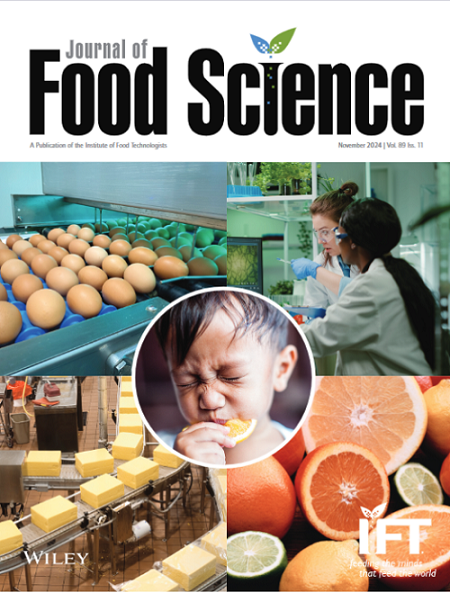Consumer Perception of Plant-Based Cheese
Abstract
Plant-based dairy alternatives have been an increasing trend among consumers, with plant-based milk being the most profitable and rapidly growing dairy alternative. Plant-based cheese (PBC), however, has recently remained static. The objectives of this study were to determine purchase motivations, consumer acceptance, and areas for improvement for Cheddar and mozzarella-style PBC. An online survey was conducted with consumers of dairy cheese (DC) and PBC (n = 311). Subsequently, consumer acceptance testing was conducted with both plant-based Cheddar-style cheese (n = 105) and plant-based mozzarella-style cheese (n = 117). Two days of testing were dedicated to each PBC style, consumers evaluated the shreds cold (as-is) on the first day and melted on the second day. The online survey consisted of a maximum difference (MXD) scaling, agreement questions, and an ingredient list activity. Consumer acceptance testing utilized liking and check-all-that-apply (CATA) questions. Conceptually, flavor, texture, ingredients, and protein content were the most important attributes for PBC purchase. A short ingredient list was preferred. Dairy cheese (DC) was perceived as superior in flavor and texture, while PBC was perceived as more sustainable, more ethical, and healthier. Both products were perceived as equally nutritious. Cheesy, creamy, buttery, and soft were desirable attributes when served cold and melted for both PB styles. Undesirable attributes for both styles when evaluated cold included gritty, rubbery, artificial, and off flavor. During the melted evaluation (both styles), artificial and off flavors were undesirable. Two major pain points remain for the PBC market: flavor and texture.
Practical Applications
Flavor and texture, both cold and hot, remain challenges for Cheddar and mozzarella-style plant-based cheeses. Understanding consumer perceptions of plant-based cheeses can aid in the development of products that meet consumer expectations and desires.


 求助内容:
求助内容: 应助结果提醒方式:
应助结果提醒方式:


